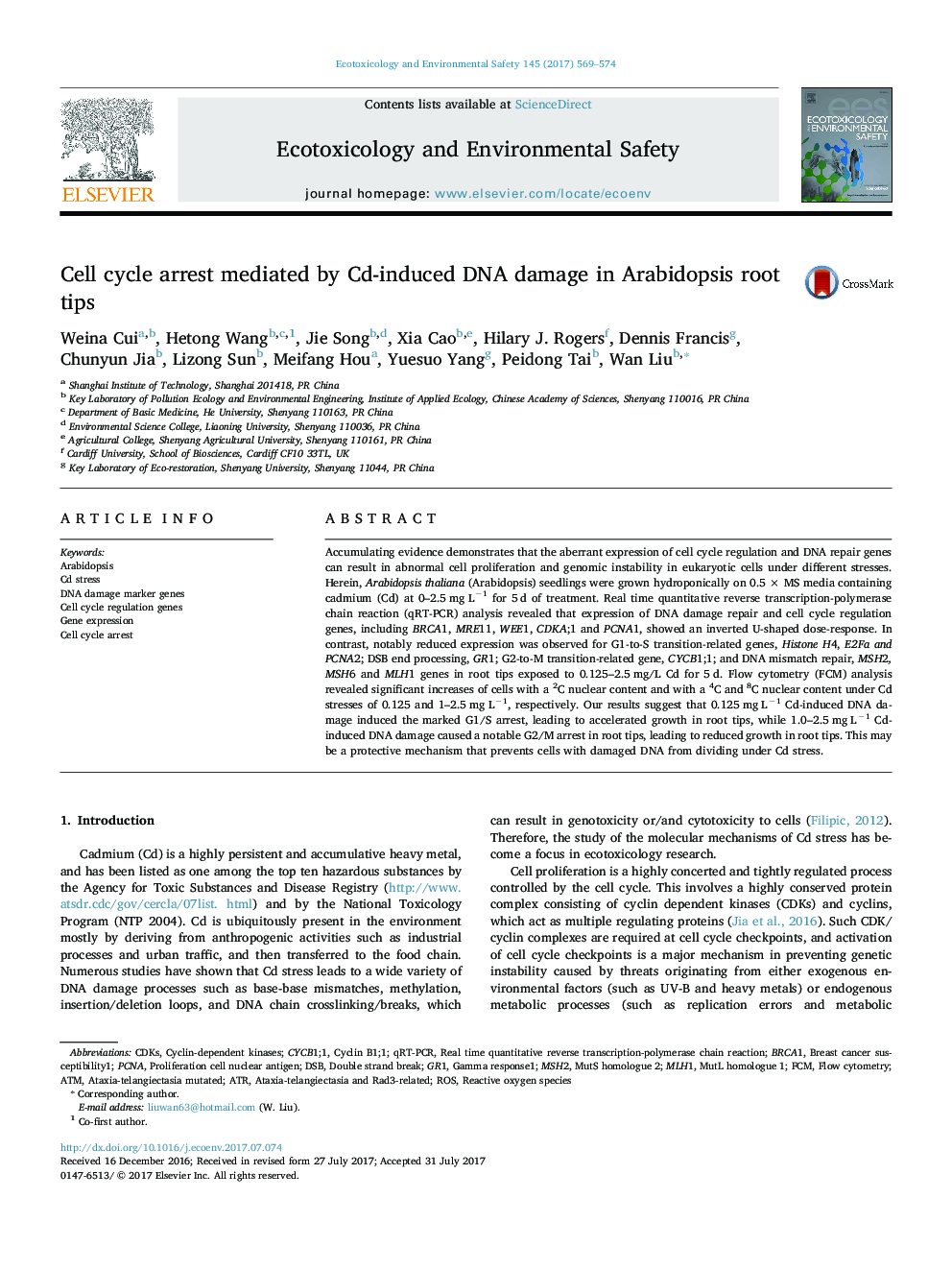| Article ID | Journal | Published Year | Pages | File Type |
|---|---|---|---|---|
| 5747737 | Ecotoxicology and Environmental Safety | 2017 | 6 Pages |
Abstract
Accumulating evidence demonstrates that the aberrant expression of cell cycle regulation and DNA repair genes can result in abnormal cell proliferation and genomic instability in eukaryotic cells under different stresses. Herein, Arabidopsis thaliana (Arabidopsis) seedlings were grown hydroponically on 0.5 à MS media containing cadmium (Cd) at 0-2.5 mg Lâ1 for 5 d of treatment. Real time quantitative reverse transcription-polymerase chain reaction (qRT-PCR) analysis revealed that expression of DNA damage repair and cell cycle regulation genes, including BRCA1, MRE11, WEE1, CDKA;1 and PCNA1, showed an inverted U-shaped dose-response. In contrast, notably reduced expression was observed for G1-to-S transition-related genes, Histone H4, E2Fa and PCNA2; DSB end processing, GR1; G2-to-M transition-related gene, CYCB1;1; and DNA mismatch repair, MSH2, MSH6 and MLH1 genes in root tips exposed to 0.125-2.5 mg/L Cd for 5 d. Flow cytometry (FCM) analysis revealed significant increases of cells with a 2C nuclear content and with a 4C and 8C nuclear content under Cd stresses of 0.125 and 1-2.5 mg Lâ1, respectively. Our results suggest that 0.125 mg Lâ1 Cd-induced DNA damage induced the marked G1/S arrest, leading to accelerated growth in root tips, while 1.0-2.5 mg Lâ1 Cd-induced DNA damage caused a notable G2/M arrest in root tips, leading to reduced growth in root tips. This may be a protective mechanism that prevents cells with damaged DNA from dividing under Cd stress.
Keywords
Related Topics
Life Sciences
Environmental Science
Environmental Chemistry
Authors
Weina Cui, Hetong Wang, Jie Song, Xia Cao, Hilary J. Rogers, Dennis Francis, Chunyun Jia, Lizong Sun, Meifang Hou, Yuesuo Yang, Peidong Tai, Wan Liu,
